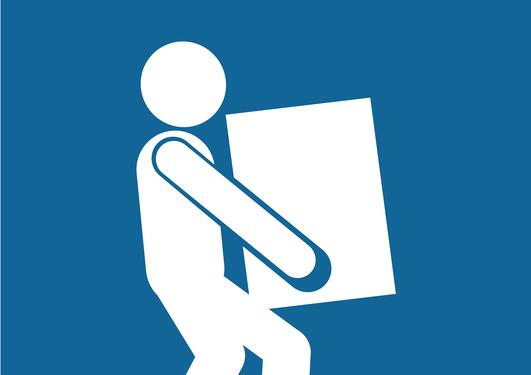Ergonomic risk assessment and ergonomics as a preventive measure in the workplace
Ergonomics as a preventive measure in the workplace and how the Occupational Health Service (BHT) can contribute in this matter.

Main content
Ergonomic risk assessment
Ergonomic risk assessment is a part of the preventive HSE work. It’s especially indicated when the employees report of having straining tasks or work-related physical health complaints.
Some mapping tools are especially designed to evaluate ergonomics. These can be used to better interpret how physical strain and/ or working postures can lead to potential health-related consequences. They will also provide more precise results compared to not using them. A few of the tools can be found at Arbeidstilsynet's webpages on ergonomics.
Some of the available tools are easy to make use of and interpret. Others require practice. The Occupational Health Service has training in using them and can assist if needed.
If the Occupational Health Service contributes with an ergonomic risk assessment at your department, a report will be produced containing recommendations on potential measures. The report will be documented in Ephorte.
In principle all employees can contact the BHT about an ergonomic risk assessment. However, it is necessary to inform/ involve the leader and the HSE-representative about the process. This is due to it being the employer’s responsibility to ensure a safe working environment and follow up potential recommendations after the assessment.
Note: Ergonomic risk assessment is not the same as when the Occupational Health Service does an assessment of an individual employee, giving recommendations to that specific person. This is confidential and will be documented in the Occupational Health Service’s journaling system.
For inquiries, please contact bht@uib.no.
Putting ergonomics on the agenda
Good ergonomics is best achieved when put on the agenda. Make sure to set some objects related to ergonomics on the yearly calendar.
How about a day designated to relevant ergonomics? Topics could be e.g. office ergonomics, lab ergonomics, lifting technique or other forms of work techniques, according to what's relevant to your department.
Prior to field work and travels a risk assessment is mandatory. What is the potential ergonomic strains and hazards in these settings?
During the HSE round we find matters needing improvement or further investigation. Write down what needs to be done, settle a date and evaluate if the tasks have been done when the time is up.
Purchasing equipment, furnishing and building projects
Consider whether the desired equipment has the necessary design and features before purchase. Be mindful that changes from current equipment can either better or worse functionality. Equipment being used by several employees should have simple and easily adjustable settings. It should be suitable for people of different physiques - height being a particularly relevant factor.
Consult with the employees. The workers usually have reflections on what’s working well or not during current conditions. They may provide valuable input on desired changes to future investments. Making good choices is cost effective. Equipment or surroundings needing replacements or adjustments is expensive.
Lighting, furniture, placement of equipment, gripping, acoustics, colour choices and contrasts in the surroundings, are all examples of what can affect the functionality of the work environment.
The Occupational Health Service can provide guidance on what makes good ergonomics. Ask us for advice on what to think through before acquiring equipment, furbishing or building projects.
Training and information
Fancy equipment does no good if the employees don’t know the correct settings. Ask around in your department; do the employees know the correct settings of a chair? And how mindful are they of the importance of variation in workload?
According to the Norwegian regulation (Forskrift om utførelse av arbeid, kapitel 23 § 23-2), training is to be given employees doing physically demanding labour, but also to those who have work lacking in variety, e.g. office work. The employer is responsible to inform and train staff on work technique, as well as suitable settings and use of equipment.
Involve the Occupational Health Service
The Occupational Health Service can contribute with e.g:
- Ergonomic risk assesment.
- Guidance on work technique.
- Advice before acquiring, furnishing and building projects to promote good ergonomic choices.
- Give relevant presentations or guide practical workshops.
- Participate during HSE-rounds.


